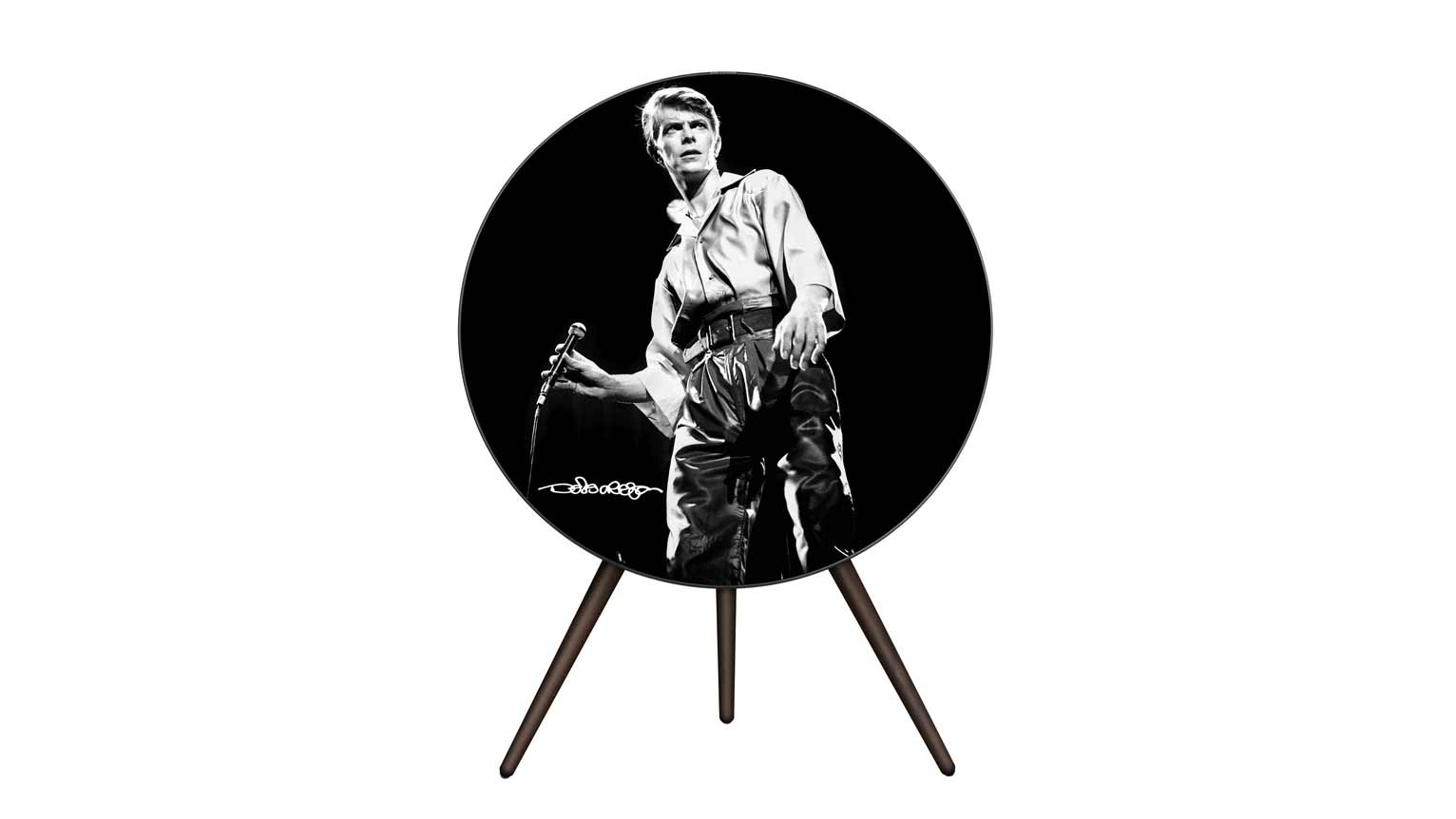8 reasons why a Dolby Atmos soundbar could be your home entertainment purchase of the year
Ultimately a technological compromise, but still a potentially movie night-changing one
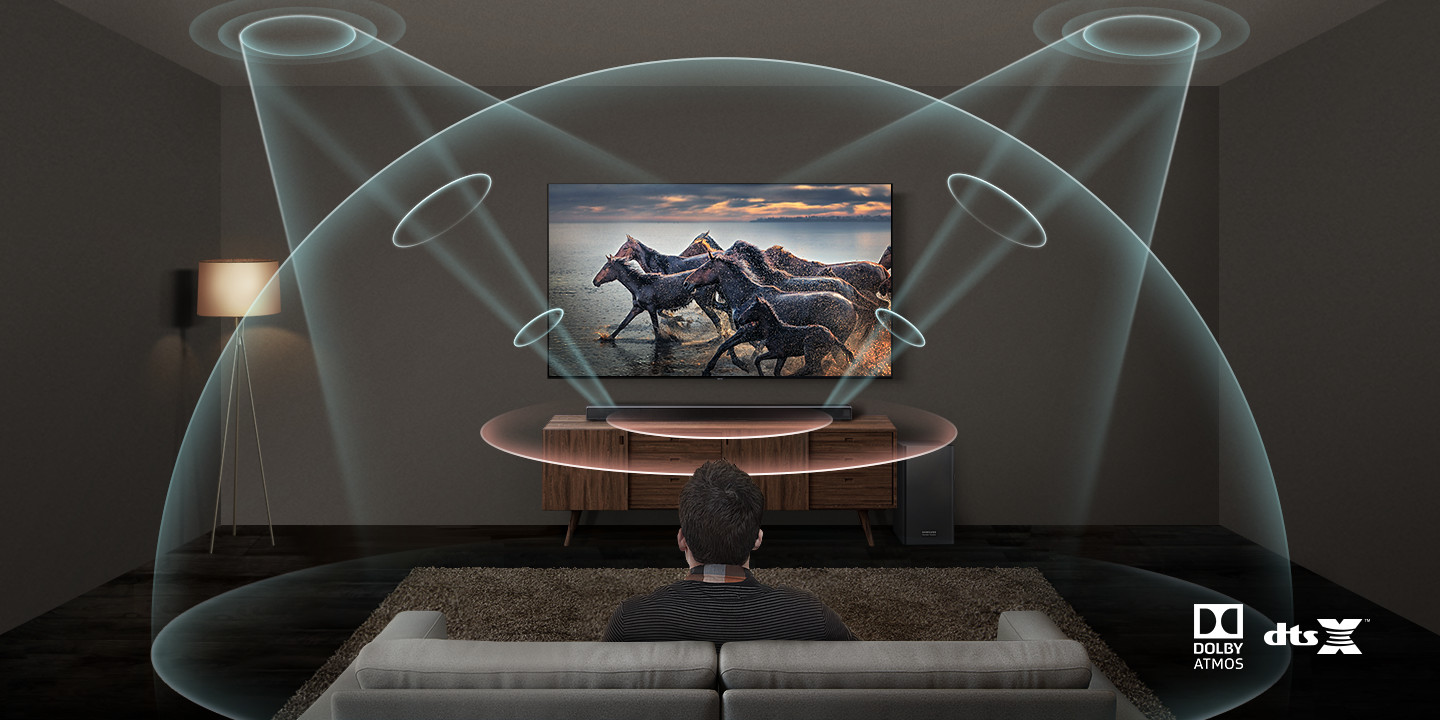
It’s likely you’ll have come across ‘Dolby Atmos’. You might have spotted the ‘ATMOS’ logo on Netflix, or seen it marketed at a Dolby Cinema or online while you’ve been researching your next soundbar. Perhaps you have an invested interest in home entertainment goings-on, in which case Atmos will probably have been on your radar for several years.
For the uninitiated, Dolby Atmos is a surround sound format that takes the ‘5.1 channel’ and ‘7.2 channel’ home cinema audio set-ups to the next level. Yes, Dolby Atmos involves bigger numbers, and more of them for that matter, accommodating a wild number of speakers and, crucially, adding overhead height to a soundfield. But it has also reinvented how movie soundtracks are made, mixed and delivered to film fanatics, to make them all that more immersive. You can read everything you need to know about Dolby Atmos here, but in short, Atmos is arguably the best thing to have happened to home cinema since 4K.
Like most technological innovations, Atmos started its consumer journey with expensive hardware and limited content, following its debut – its world premiere, if you will – in the cinema with Disney’s Brave in 2012. Fast forward 10 years to today and, as of pretty recently, you can get a worthwhile Dolby Atmos experience in the comfort of your own living room for hundreds, as opposed to thousands, of bucks (with ‘worthwhile’ being the key word there). And that’s by buying a Dolby Atmos soundbar.
Atmos soundbars aren’t ‘new’ exactly, and for a few years now the market has been bookended by uber-excellent albeit mega-expensive models (like the Sennheiser Ambeo) and budget bars that barely deserve the Atmos badge (something we’ve condemned in the past), with not much in the middle to write home about. But in the last year or so the Dolby technology has trickled down to a handful of accessibly priced models that are good enough to convincingly show consumers at home what all the fuss is about. So, why should you invest?
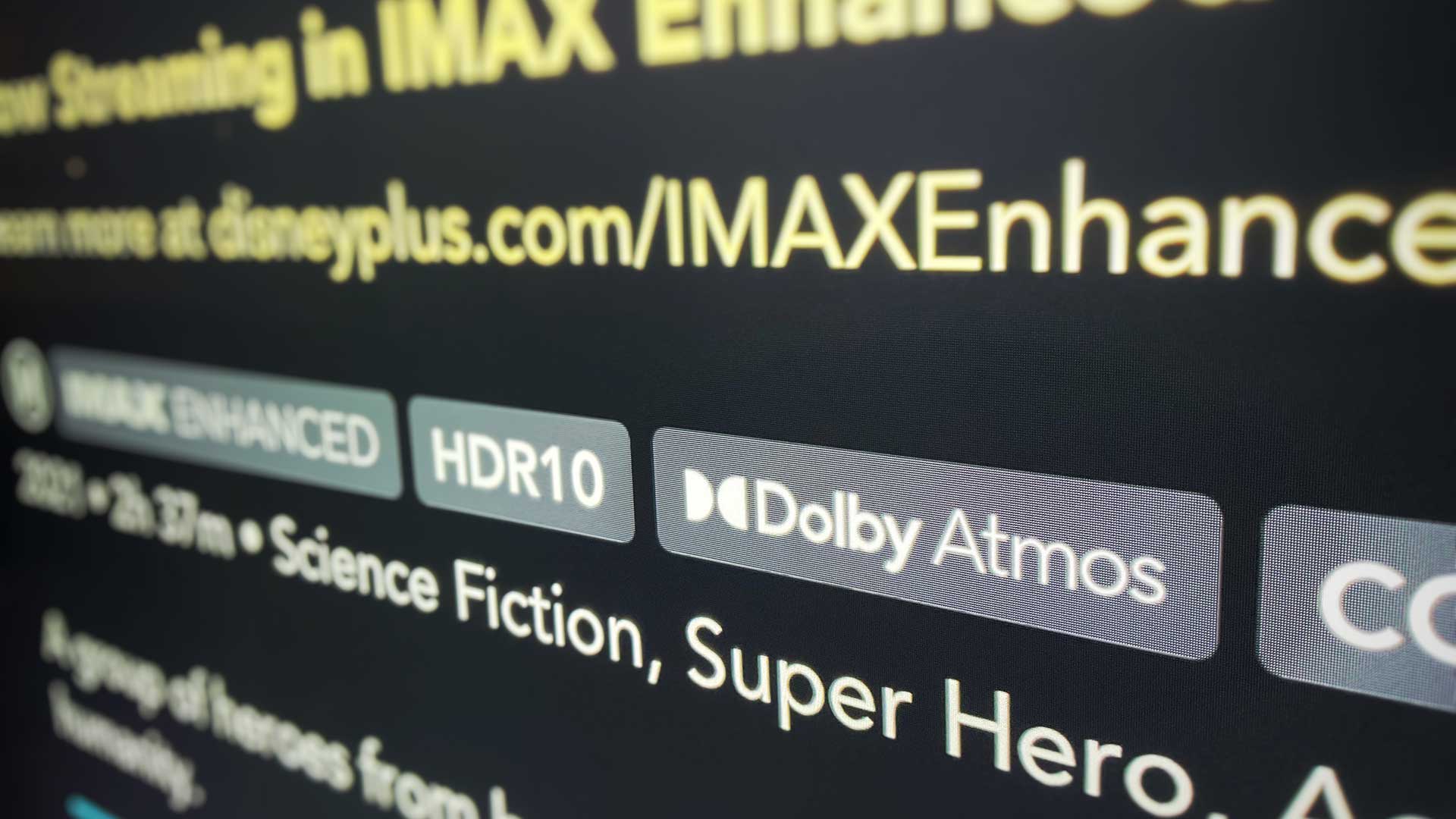
1. Dolby Atmos movies are now everywhere…
It’s likely the movie streaming service you subscribe to has a strong catalogue of films with Dolby Atmos soundtracks. Netflix, Amazon Prime Video, Disney+, Apple TV+, Sky, HBO Max, Vudu, Rakuten (select devices) and Kaleidescape all offer Atmos titles within their subscription services/stores, so Atmos is no longer something you'll likely only enjoy on occasion.
So long as you have a subscription to one of those services and a Dolby Atmos-compatible soundbar connected to a TV via an HDMI ARC (via Dolby Digital Plus) or eARC (via Dolby TrueHD) connection (note that optical doesn’t support Atmos audio passthrough), you’re good to go.
The majority of new 4K Ultra HD Blu-ray releases have Atmos soundtracks, too, so provided you buy a 4K Blu-ray player (and connect it to your TV or soundbar via HDMI), that is another means of enjoying Atmos audio.
Get the What Hi-Fi? Newsletter
The latest hi-fi, home cinema and tech news, reviews, buying advice and deals, direct to your inbox.
2. …and they aren’t going anywhere
An understandable worry when parting with significant amounts of cash for consumer electronics these days is how long it will be relevant. Obsolescence shouldn’t be an issue here, though – with regards to movie streaming, at least – as Dolby Atmos is well established and popular throughout the industry chain, and therefore likely to be around from both hardware and software perspectives for years to come. This is no short-lived fad.
3. Which is great, because Atmos can sound awesome
When you think of Atmos or even 5.1 surround sound soundtracks, you probably think immediately of blockbuster movie moments – Thor’s hammer flying around, the opening scene of Gravity, the hunt in Mad Max: Fury Road. Indeed, action movies feature heavily in our best Dolby Atmos movie scenes to test your home cinema list, and the best mixes really do magnify what’s on screen. Get your ears around the bombing run scene in Angelina Jolie's Unbroken and the value of the format is undeniable.
But Atmos isn’t genre bias: it’s a tool effectively used by sound engineers of less bombastic movies as well, to draw you into their intended mood or atmosphere – to, again, enhance their ability to immerse their audience. Roma and Belfast are two excellent examples of how it can intensify a setting’s realism and intimacy both subtly and not so.
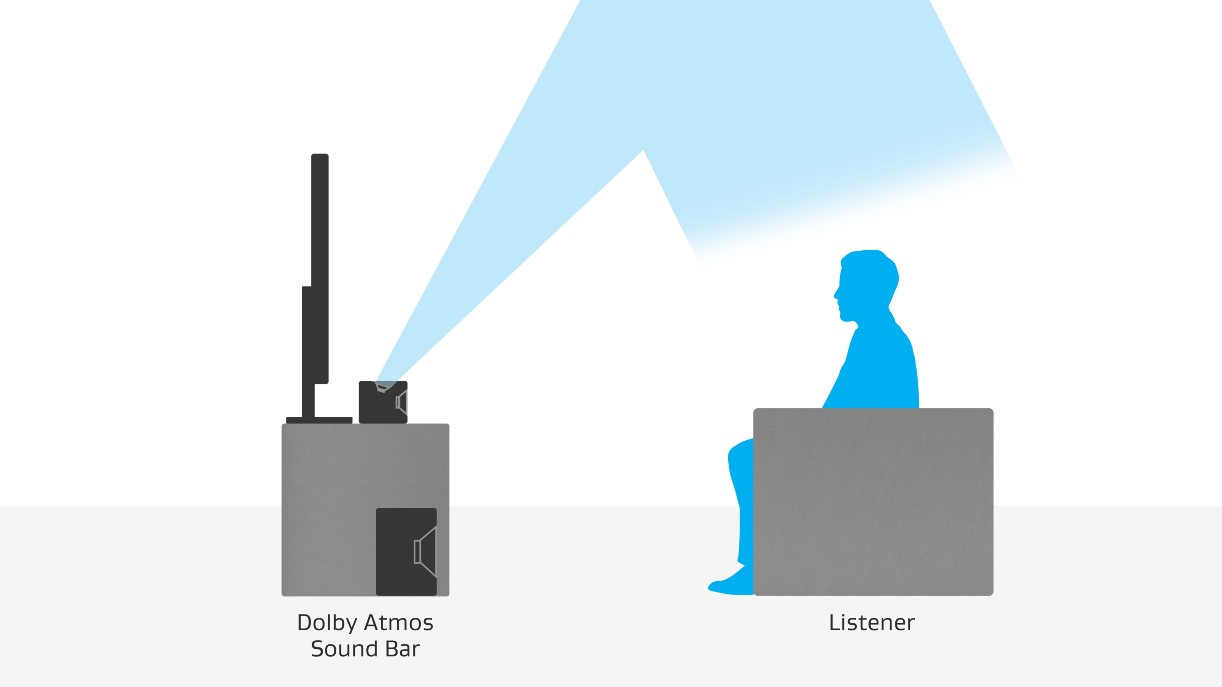
4. Your TV needs it, seriously
If you have a lovely, thin, flatscreen TV, which is likely if you’ve bought a new TV in the last decade, it almost certainly would benefit from a soundbar, full stop. You should know that a Dolby Atmos soundbar won’t necessarily be better than your existing (or a new) similarly priced ‘standard’ soundbar in every sonic aspect, but their Atmos-focused engineering should mean they deliver Atmos audio through wider, taller (more enveloping, really) soundfields with greater precision. That the majority of premium soundbars support Atmos – it’s almost expected now above a certain price – does mean they tend to be the best overall soundbars you can buy now.
An increasing number of TVs themselves support Dolby Atmos, though the Atmos effect you’ll get from small drivers crammed into a TV frame that is determined to still be super-thin will often be minimal.
Exceptions are the few flagship TVs with built-in, upward-firing Dolby Atmos speaker systems (like Panasonic’s JZ2000), where any serious upgrade thereafter would likely sensibly be to an Atmos speaker package rather than an external Atmos soundbar.
5. Decent Atmos soundbars no longer cost the earth
If you look at our best Dolby Atmos soundbars list, the average price of the top 10 we recommend is £1000 / $1100. That is still a considerable amount, of course (though miles cheaper than a decent ‘proper’ Atmos package set-up), and the majority of decent-performing Atmos soundbars still demand that kind of outlay.
As we alluded to earlier, however, a handful of more affordable Atmos soundbars that do decent jobs in conveying the Atmos effect have recently sprung up, the best of which we believe are the Sonos Beam Gen 2, Sonos Arc and Bluesound Pulse Soundbar+.
You should be wary of the cheaper crop of soundbars that ‘only’ support Dolby Atmos Height Virtualisation technology (like the JBL Bar 5.0 MultiBeam). Typically implemented to get around a soundbar not having upward-firing speakers (as most of the best bars do), this processing works to simulate an overhead experience from the output of forward-facing drivers – but that’s more of a compromise again.
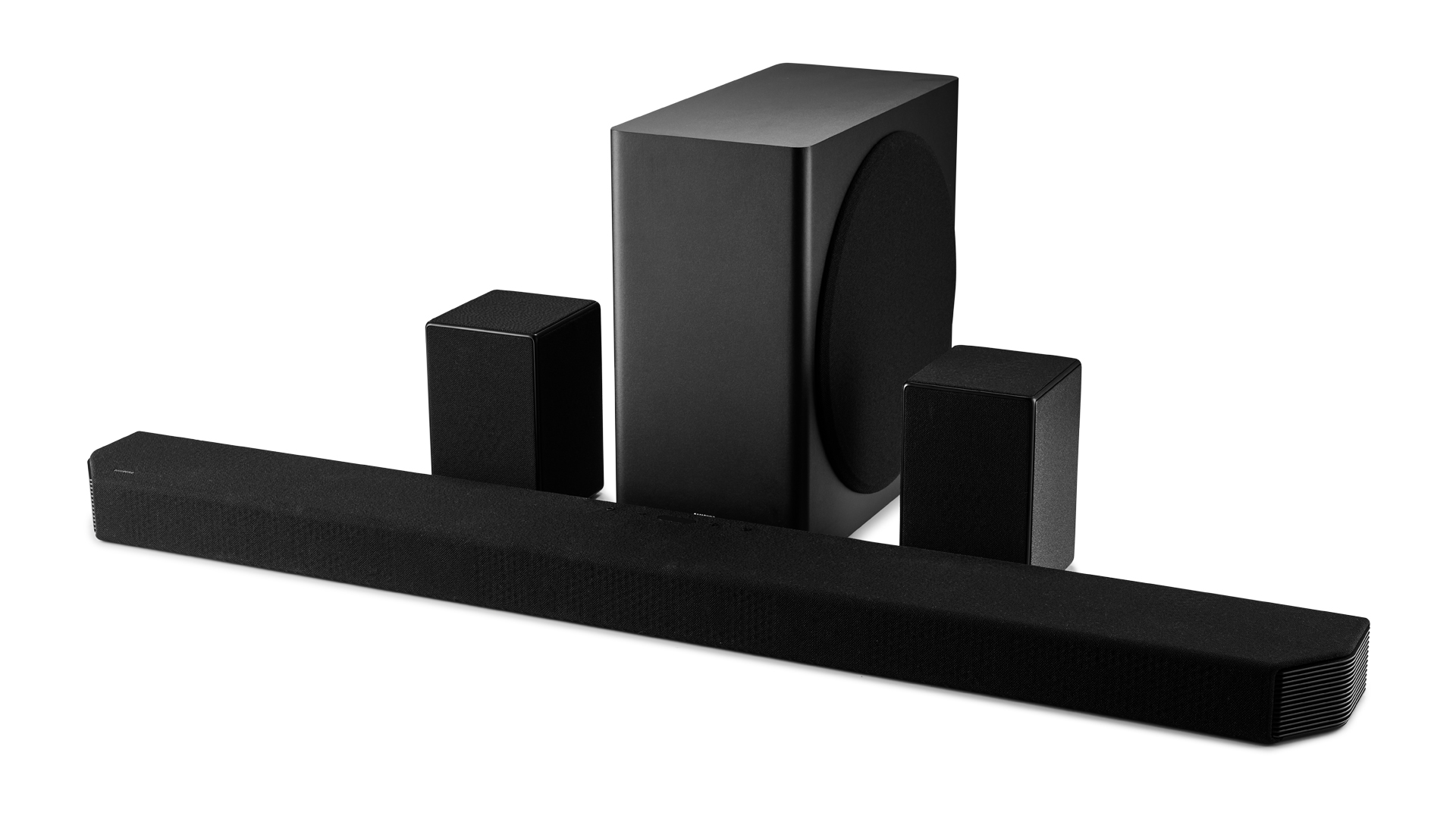
6. Soundbar-cum-speaker-package models help bridge the gap
Even if you buy the apex of Dolby Atmos soundbars, it will offer a diluted Dolby Atmos experience compared to what the best Atmos-compatible surround sound speaker package set-ups will offer, especially ones that go the whole hog with ceiling-installed height-channel speakers.
As good as sound processing within Atmos soundbars is in manipulating soundfields to offer maximum immersion these days, a line of small speakers inside one bar positioned in front of you will not be able to achieve the same big, enveloping sound that several proper speakers dotted around your seated position, driven by a powerhouse receiver, will be capable of.
Helping to physically bridge that sonic gap between soundbars and speaker packages are Atmos soundbars like the Samsung Q950A (above) that come with – you guessed it – small speaker modules designed to be placed just behind you as ‘rear’ speakers.
7. Some can 'Atmos-fy' normal content
Obviously, Atmos soundbars can also play non-Atmos content, but many have built-in processing that works to upscale – or ‘Atmosfy’, if you like – any audio to Atmos too.
The Bose Smart Soundbar 900 uses the company's always-on TrueSpace technology to upmix non-Atmos content, making the decision itself as to when, and when not, to use the height drivers. The Creative SXFI Carrier – made in collaboration with Dolby itself – benefits from an upmixing technology that uses all drivers at all times regardless of the format being decoded, too, while the Devialet Dione and Sennheiser Ambeo have user-selectable modes that do similar things.
We have found these kinds of DSP applications hit and miss, which is why we prefer soundbars with this as an optional mode rather than a compulsory setting, but when it is done properly it's a valuable feature to have for 'normal' TV viewing.
8. Dolby Atmos Music is a bonus
Albeit to a lesser extent, Dolby Atmos technology has now infiltrated the music scene too, and music streaming services such as Tidal now have an increasingly large number of audio tracks mixed in Atmos for subscribers to listen to.
A Dolby Atmos soundbar will play them just as effectively as a movie, so long as the device it is connected to (a TV or streaming stick, say) also supports Atmos. For example, to play Tidal’s Dolby Atmos Music tracks through an Atmos soundbar, you’ll need a compatible device (such as an Android TV, Apple TV 4K, Fire TV, or Android TV streaming media player) in your TV chain, as well as the Tidal HiFi Plus subscription required to unlock these immersive tracks.
The downside?
Dolby Atmos soundbars are, by nature, a compromise. Just as a soundbar is ultimately a compromised method of delivering a 5.1-channel soundtrack, a Dolby Atmos soundbar is ultimately a compromised way of delivering an Atmos soundtrack.
If you do have the practical and financial means – and of course, the willingness – to install a fully-fledged, AV receiver-inclusive, multi-speaker home cinema system, do it – you won’t regret it. But most people won’t, which is why the concept of the ‘soundbar’ (and the ‘soundbase’ – remember those?) came about in the first place.
Buy the right one and you’ll still get the valuable ‘extra’ experience Atmos offers that you weren’t getting before.
MORE:
Dolby Atmos: what is it? How can you get it?
The best soundbars on the market – including Dolby Atmos soundbars
See only the best Dolby Atmos soundbars
Becky is the managing editor of What Hi-Fi? and, since her recent move to Melbourne, also the editor of the brand's sister magazines Down Under – Australian Hi-Fi and Audio Esoterica. During her 11+ years in the hi-fi industry, she has reviewed all manner of audio gear, from budget amplifiers to high-end speakers, and particularly specialises in headphones and head-fi devices. In her spare time, Becky can often be found running, watching Liverpool FC and horror movies, and hunting for gluten-free cake.
-
Friesiansam ReplyWhat Hi-Fi? said:4. Your TV needs it, seriously
We have a Q Acoustics M2, it's good enough. I like good quality sound and my amp and headphones cost over £2500 but, for tv, so much of which is these days, utter drivel, it's just not worth it, "seriously".

